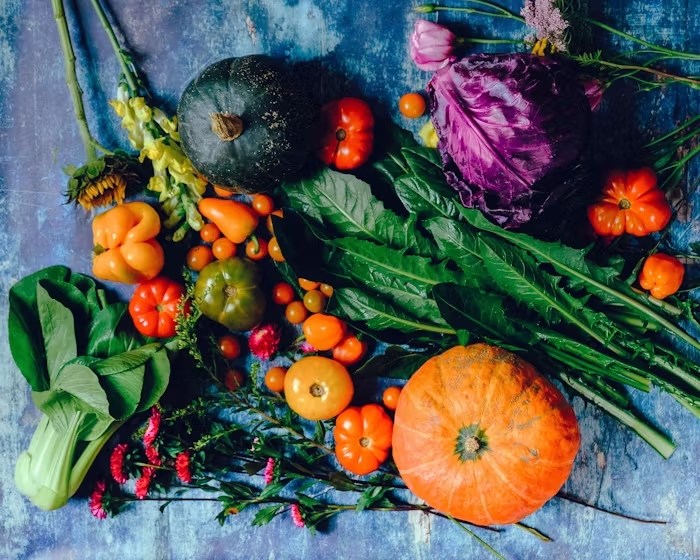Fiber is often the unsung hero of a healthy diet, playing a vital role in digestion, heart health, and weight management. Despite its importance, many people fail to consume the recommended daily amount, which is about 25 grams for women and 38 grams for men, according to dietary guidelines.
Incorporating more fiber into your meals doesn’t have to be a challenge. With a few simple changes, you can boost your fiber intake and enjoy the benefits of a well-functioning digestive system and improved overall health. Here’s a comprehensive guide on how to add more fiber to your diet seamlessly.
Why Fiber Matters
Before diving into tips, let’s explore why fiber is crucial for your health.
Types of Fiber
- Soluble fiber: Dissolves in water, forming a gel-like substance. It helps lower blood sugar levels and cholesterol. Examples include oats, beans, and apples.
- Insoluble fiber: Adds bulk to stool and promotes regular bowel movements. Found in whole grains, nuts, and vegetables.

Health Benefits
- Improves digestion: Keeps your gut healthy and prevents constipation.
- Supports heart health: Reduces cholesterol levels and lowers the risk of heart disease.
- Aids in weight management: Keeps you fuller longer, reducing overeating.
- Regulates blood sugar: Slows sugar absorption, benefiting those with diabetes.
With these benefits in mind, let’s explore practical tips to boost your fiber intake.
1. Start Your Day with High-Fiber Breakfasts
Breakfast is a great opportunity to incorporate fiber-rich foods into your diet.
Ideas for a Fiber-Packed Breakfast
- Oatmeal: Choose steel-cut or rolled oats and top with berries, chia seeds, and a drizzle of honey.
- Whole-grain toast: Pair with avocado or nut butter for a fiber-filled, energizing start.
- Smoothies: Blend spinach, frozen fruit, flaxseeds, and a scoop of unprocessed wheat bran.
Swapping out refined cereals for whole-grain options can significantly boost your fiber intake.
2. Choose Whole Grains Over Refined Grains
Refined grains lose much of their fiber content during processing. Opting for whole-grain alternatives ensures you get more nutrients and fiber.
Easy Swaps
- Replace white rice with brown rice, quinoa, or farro.
- Choose whole-grain bread, pasta, and tortillas over their refined counterparts.
- Experiment with ancient grains like barley or bulgur for variety.
Reading labels and looking for “whole grain” as the first ingredient can help you make smarter choices.
3. Incorporate More Fruits and Vegetables
Fruits and vegetables are natural sources of both soluble and insoluble fiber.
Tips to Add More Produce
- Keep the skins on: The skin of fruits like apples and pears contains a significant amount of fiber.
- Snack on raw veggies: Carrot sticks, celery, and bell pepper strips are crunchy and nutritious.
- Add vegetables to every meal: Toss spinach into your eggs, add zucchini to pasta sauces, or roast a medley of veggies for dinner.
Aim for at least five servings of fruits and vegetables daily to maximize fiber intake.
4. Include Legumes in Your Meals
Beans, lentils, and chickpeas are fiber powerhouses that also provide protein and other nutrients.
Ways to Use Legumes
- Add lentils to soups, stews, or curries.
- Use black beans or kidney beans in salads, tacos, or grain bowls.
- Snack on roasted chickpeas or hummus with raw vegetables.
Legumes are versatile and easy to incorporate into a variety of cuisines.
5. Snack Smart with High-Fiber Foods
Snacking is an excellent opportunity to add more fiber to your diet.
Healthy High-Fiber Snacks
- Popcorn: A whole grain that’s low in calories and high in fiber. Choose air-popped for the healthiest option.
- Nuts and seeds: Almonds, pistachios, and sunflower seeds are nutrient-dense snacks.
- Fresh fruit: Apples, oranges, and bananas are portable and fiber-rich.
Choosing snacks with natural fiber can help curb hunger between meals.
6. Incorporate Seeds into Your Diet
Seeds like chia, flax, and pumpkin are small but mighty sources of fiber.
How to Use Seeds
- Sprinkle flaxseeds or chia seeds over yogurt, cereal, or salads.
- Blend them into smoothies for an added nutrient boost.
- Use ground flaxseed as an egg substitute in baking recipes.
These tiny superfoods are easy to store and can be added to almost any meal.
7. Drink Plenty of Water
Fiber needs water to do its job effectively, especially insoluble fiber, which absorbs water to add bulk to stool.
Hydration Tips
- Aim for at least 8–10 cups of water daily, depending on your activity level.
- Pair high-fiber meals with plenty of fluids to prevent bloating or constipation.
Staying hydrated ensures that your digestive system can process fiber efficiently.
8. Read Food Labels
Many packaged foods now highlight their fiber content, making it easier to choose high-fiber options.
What to Look For
- High-fiber claim: Foods labeled as “high in fiber” typically contain at least 5 grams per serving.
- Ingredient list: Look for whole grains and other natural fiber sources at the top of the list.
- Low sugar: Choose high-fiber products that are low in added sugars to maximize health benefits.
By being mindful of labels, you can make informed choices at the grocery store.
9. Gradually Increase Your Fiber Intake
If your diet is currently low in fiber, it’s important to increase it gradually to avoid digestive discomfort.
Steps to Transition Smoothly
- Add one high-fiber food to your diet each week.
- Mix high-fiber options with familiar foods to ease the transition.
- Monitor your body’s response and adjust as needed.
A slow and steady approach ensures your body adapts without issues.
10. Meal Prep with Fiber in Mind
Planning your meals ahead of time can help you consistently include more fiber in your diet.
Meal Prep Tips
- Batch-cook soups, stews, or chili with beans and vegetables.
- Pre-cut fruits and veggies for quick snacks or side dishes.
- Prepare whole grains like quinoa or brown rice in advance for easy meal additions.
Having fiber-rich foods ready to go makes it easier to stick to your goals.
Incorporating more fiber into your diet is one of the simplest ways to improve your health and well-being. From aiding digestion to supporting heart health, fiber plays a crucial role in keeping your body functioning optimally.
By making small, sustainable changes — like choosing whole grains, snacking smart, and adding more fruits and vegetables — you can significantly boost your fiber intake. Remember to pair fiber-rich foods with plenty of water and gradually increase your intake for the best results.
With these tips, you’ll not only feel better physically but also enjoy a more satisfying and balanced approach to eating. Take the first step today, and your body will thank you for it!














